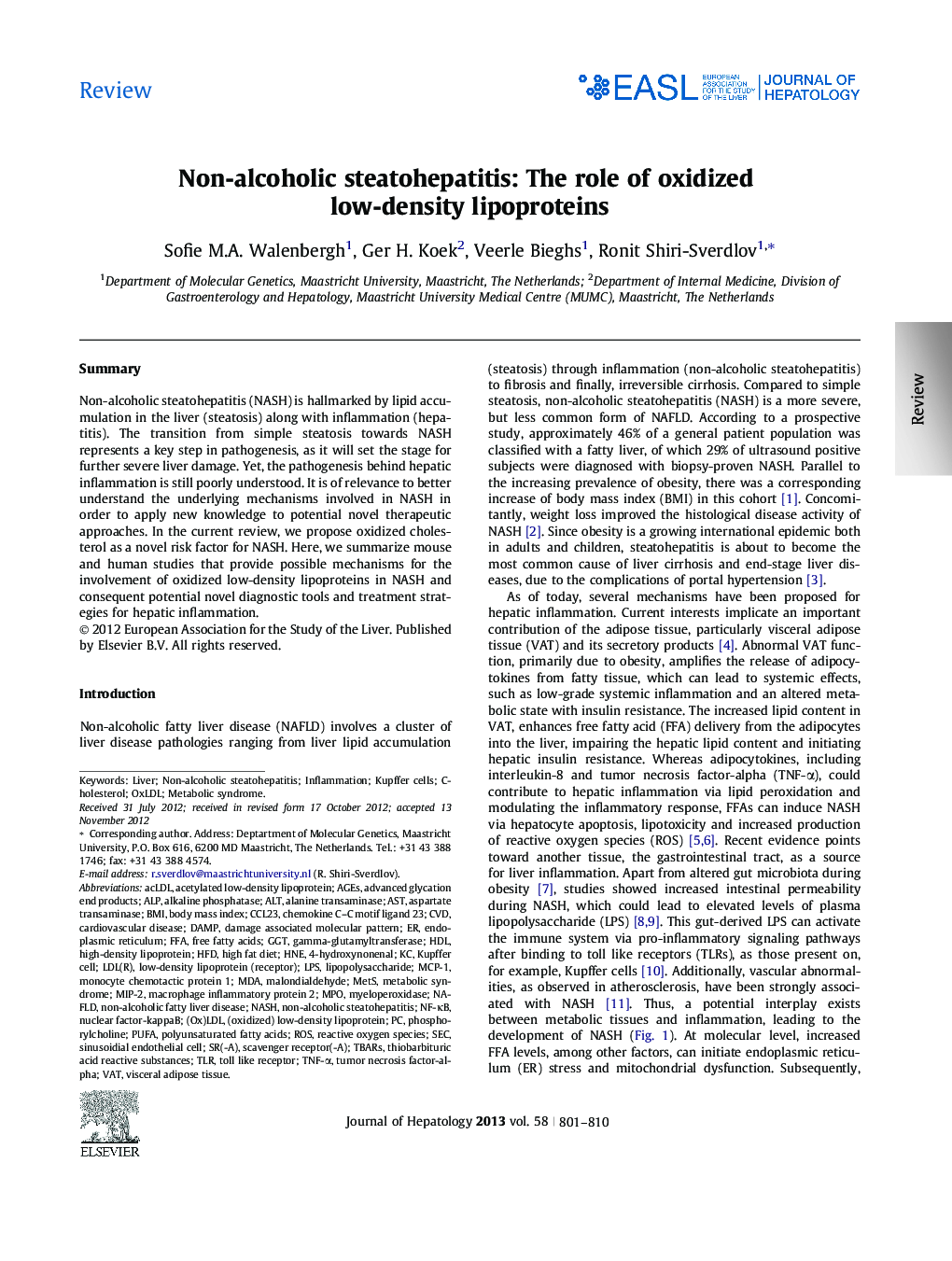| Article ID | Journal | Published Year | Pages | File Type |
|---|---|---|---|---|
| 6105543 | Journal of Hepatology | 2013 | 10 Pages |
SummaryNon-alcoholic steatohepatitis (NASH) is hallmarked by lipid accumulation in the liver (steatosis) along with inflammation (hepatitis). The transition from simple steatosis towards NASH represents a key step in pathogenesis, as it will set the stage for further severe liver damage. Yet, the pathogenesis behind hepatic inflammation is still poorly understood. It is of relevance to better understand the underlying mechanisms involved in NASH in order to apply new knowledge to potential novel therapeutic approaches. In the current review, we propose oxidized cholesterol as a novel risk factor for NASH. Here, we summarize mouse and human studies that provide possible mechanisms for the involvement of oxidized low-density lipoproteins in NASH and consequent potential novel diagnostic tools and treatment strategies for hepatic inflammation.
